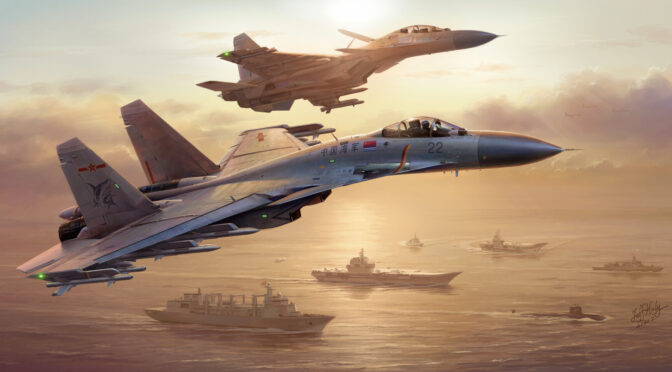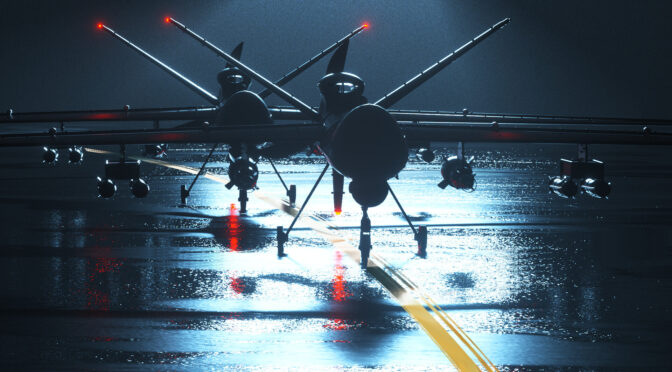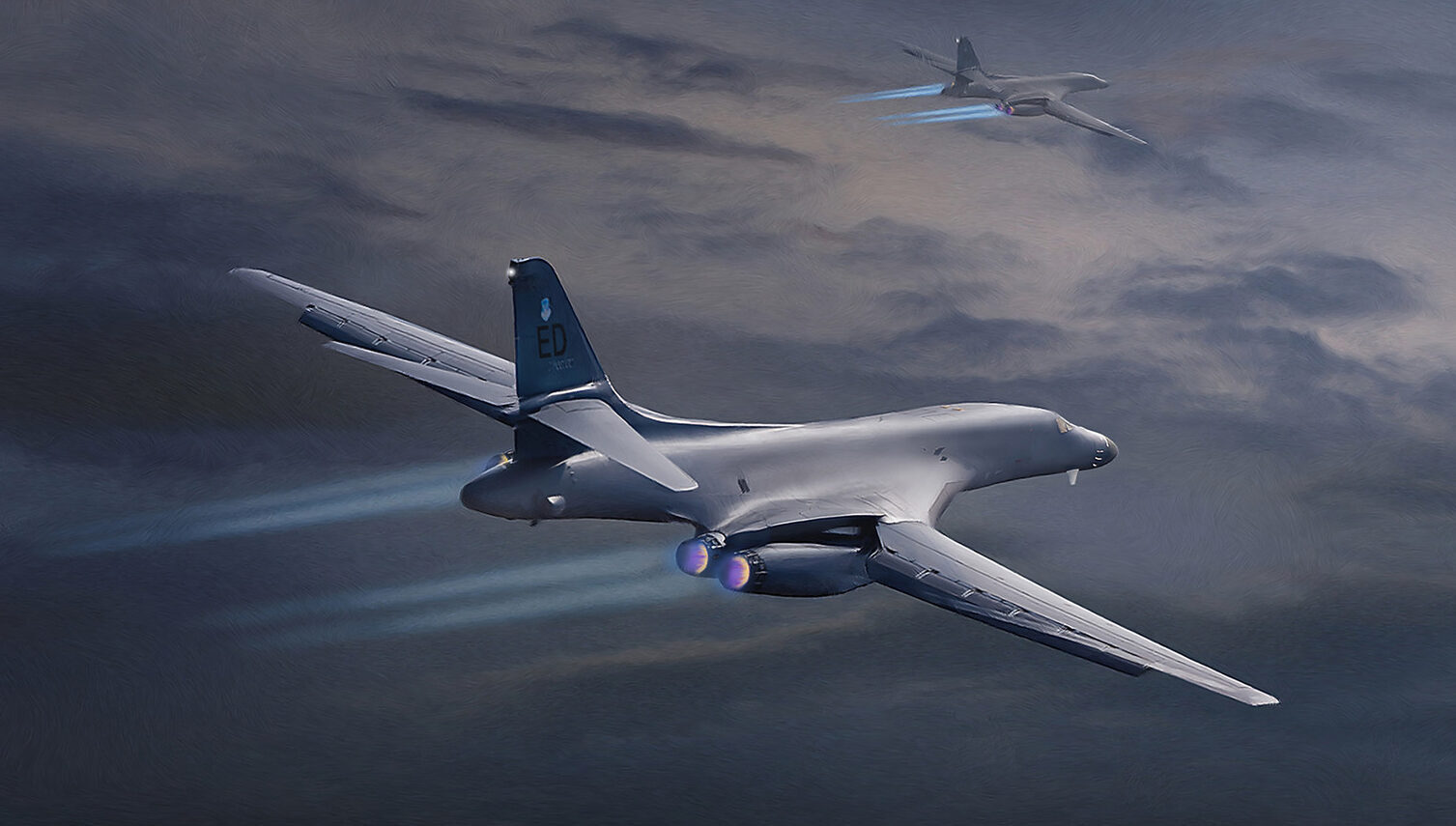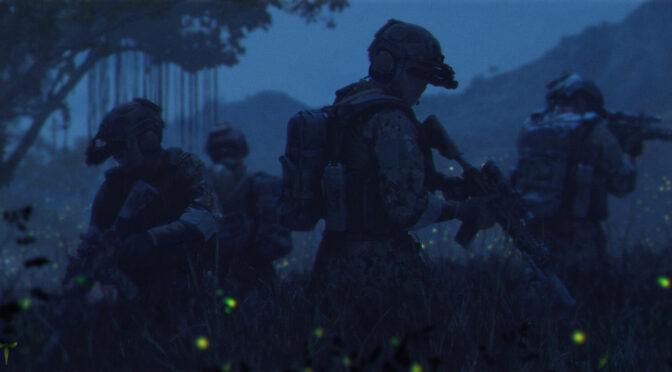Fiction Contest Week
By First Lieutenant Karl Flynn, USMC
First Lieutenant Liu, USMC, looked north out to sea toward the Luzon Strait. The sky was turning amber and orange as the sun sank toward the horizon. He knew Taiwan lay beyond the horizon 200 kilometers away. As he often did, he began to wonder what was happening there. As a platoon commander, he was not privy to strategic level actions. Even if he had had internet access, it would have been impossible to discern the truth from news sources, much less social media. Both sides were pushing as much deception as possible. Liu knew he probably wouldn’t find out until well after the war concluded, which, as far as he knew, could last for a very, very long time.
We’re probably in more or less of a stalemate. Since the Ford got hit by that DF-21, we’re not gonna get much help. The Navy won’t risk any carriers—or amphibs—within 1,500 clicks of any Chinese-held island, so there’s no force substantial enough that can get close enough to do anything. On the other hand, the PLAN has to be terrified of the subs we’ve got left. After the Shandong was sunk by—presumably—a fast attack, they won’t want to risk their ships on the high seas, either.
“Sir, the boat’s heading back.”
Liu looked at his squad leader. Sergeant Morales was lying in a small depression at the edge of the beach with his binoculars trained on a vessel a few hundred meters offshore. The craft was an optionally manned surface vessel about 30 feet long. The Marines used its high resolution sonar to check on the fuel bladders that were staged on the seafloor and to ferry supplies.
“So it is. Buford, what’s it saying?”
What appeared to be a small grassy hill replied. “Scan shows the dracones that were supposed to arrive are there, sir. I have the grids to both of them.” Corporal Buford, the platoon radio operator, was laying under a camouflage net to conceal the laptop screen he was looking at.
Perfect. The divers can get them checked tomorrow morning. At 935 tons each, that brings our fuel total to 3,740 tons. Well, that’s fuel that we have underwater. We still have those two fuel bladders at the FARP. Even after the Seahawk topped off this morning we’ve barely put a dent in them.
“Roger, let’s head back. Once we get there get those grids to the divers. Lieutenant Bolton will want them to check the dracones first thing tomorrow.”
“Roger.”
Buford started packing up his Toughbook and radio while the rest of the squad assumed a staggered column formation.
Liu keyed his radio. “Sentinel, this is white one, over.”
A voice responded, “White one, go for Sentinel, over.”
“Patrol is retrograding. No change to pack count or route.”
“Copy. Roger up as you pass the ground sensors, over.”
“White one copies, out.”
Liu gave the hand signal to begin moving. Once the lead element of the patrol reached where the ground sensors were emplaced, Liu got back on his radio.
“Sentinel, this is white one, passing ground sensors, over.”
“Sentinel copies. We’re picking you up. See you shortly, over.”
“Roger, out.”
______________________________________________________________________________________
The island the Marines were on was named Siayan. Barely a kilometer north to south, the island was part of the Batanes Islands halfway between Taiwan and The Philippines. Siayan was home to a total of 91 personnel including 60 Marines, 15 sailors, and 16 soldiers who manned the Expeditionary Advanced Base (EAB) under the command of a Navy surface warfare officer, Lieutenant Bolton. The Marines on the island included a mobile reconnaissance platoon reinforced with a rifle squad and an aircraft maintenance detachment of about 20 Marines. There were six sailors who operated and maintained a C-RAM system, six communications specialists, and two Navy divers. The Army also had a detachment of 17 soldiers who operated and maintained surface-to-air missiles. The senior-most soldier was Sergeant First Class McDaniel who had spent his career in the Army’s air defense artillery branch. The EAB also boasted a forward arming and refueling point and an expeditionary pier to accommodate small surface craft.
As the Marines patrolled back, they passed THAAD and MEADS launchers. Though operated by the Army, they were compatible with the Navy’s Aegis system. These weapons made Siayan a node in the network of sensors and shooters on land, at sea, and in the air. The Navy had calculated that this particular EAB would present a low payoff target to the PLA. While it was certainly a thorn in their side, Navy planners—and Liu—hoped that it would be just not enough of a thorn to warrant deliberate action to destroy it.
The sun was setting over the trees as the Marines arrived at their expeditionary shelters. These were essentially shipping containers with lighting and climate control, though air conditioning was never used in order to save fuel. Eleven were used by the Marines, sailors, and soldiers. The three that were used for command and control always had their air conditioning units running to cool their electronic systems. This made them a popular spot for Marines to congregate. Gunnery Sergeant Cunningham—Liu’s platoon sergeant—regularly had to kick them out. Three other shelters were used to store supplies including replacement parts, lubricants, coolant, hydraulic fluid, sonobuoys, ammunition, and several tons of food.
The last three shelters were usually empty. Periodically, they would be used by an enabling asset dispatched to the EAB. These included Seabees during the EAB’s initial construction, Navy EOD personnel, and various maintenance teams. When they weren’t in use, the sailors, soldiers, and Marines turned them into gyms using makeshift exercise equipment. Liu passed his shelter and headed for the communications shelter. He unlatched the door, entered, and sealed the door behind him, then looked at the sailor behind the computer screen.
“We’re back. Anything for me?”
“Yes, sir, I was about to radio you. Just heard from the Petersen’s Seahawk. The pilot said they ran into some kind of maintenance issue and that we’re the closest place to go. They’ll land in about 20 minutes.”
This doesn’t sound good.
“OK. I take it Lieutenant Bolton and Staff Sergeant Garrison aren’t tracking yet?”
“Yes, sir.”
“Roger, I’ll go let them know.”
“I can do that for—” he started to get up from his chair, but Liu motioned for him to stay seated.
“No need. I’d rather deliver the bad news than make you do it.”
Liu found Lieutenant Bolton talking to Staff Sergeant Garrison by the balloon tether shortly after the sun set. He looked up at the balloon floating several hundred feet above him, still visible in the twilight. The balloon was a relic from the global war on terror. In Afghanistan, Marines used aerostats to give powerful optics a bird’s eye view of the battlefield. Although SSgt Garrison’s primary job was aircraft maintenance, he was also involved in maintenance for systems on the EAB. Liu walked up as the two were having a conversation about the EAB’s distillers. Bolton saw Liu approaching.
“What’s up, Liu?”
“Good afternoon, gents. I have good news, but I’m afraid I also have some bad news.” Bolton and Garrison exchanged a look.
Here it goes.
“The Seahawk ran into a maintenance issue. It’s heading back here.”
“Sir, did they say what the issue was?” Garrison asked.
“I’m afraid not, Staff Sergeant.” Garrison started walking to the communications shelter grumbling curses under his breath. Liu continued, “Good news is we confirmed that those two dracones are right where they’re supposed to be.”
Bolton thought for a moment. “That helo will probably keep Staff Sergeant and his Marines busy for a while.”
“Yes, sir.”
“Anything else from your patrol?”
“No, sir.”
“OK. Have you eaten anything since you’ve been back?”
“No, sir.”
“Alright.” Bolton sighed in frustration. “Go get some chow. Once Staff Sergeant is done talking to the helo crew I’ll start passing our situation up the chain of command.”
“Aye aye, sir.”
Liu started walking back to his Marines.
Guess he’s not that mad after all.
______________________________________________________________________________________
A few minutes later, Liu was eating and chatting with his Marines when Bolton came out of the communications shelter. He saw Liu and started walking over to him. Liu started to get up.
“Sit down, Liu.”
This probably won’t be good.
“Roger, sir.” Liu complied.
Bolton continued, “Just got off the hook with higher and the Seahawk crew. They think they know what the issue is and they have the part to fix it—at the airfield on Itbayat.”
Itbayat was a substantially larger island eight kilometers southwest of Siayan.
I don’t like where this is going.
“Once they land Staff Sergeant Garrison can confirm which part they need. Once he does, I need you to take one of the ARVs to get it.”
Now I see why he’s not angry: it’s my problem, not his. Looks like I won’t be getting any sleep tonight.
“Understood, sir.”
Bolton nodded, then headed back to the communications shelter. Liu got up to go find his gunner, Corporal Olson. Both Marines had initially trained on the LAV-25 when the Marine Corps still fielded LAR units. The Marines had replaced the LAV with the Amphibious Reconnaissance Vehicle (ARV) and used them to form Mobile Reconnaissance Battalions (MRBs). MRBs also employed smaller ground vehicles, unmanned aircraft, and optionally manned surface vessels. While LAR units could only conduct terrestrial operations, MRBs could operate in the littorals.
The ARV itself was lightyears ahead of the LAV-25. It was capable of swimming in the open ocean and was armed with a bigger main gun and a TOW missile launcher from the Army’s Bradley fighting vehicle. The gun sights were upgraded and the commander had an independent optics suite that could be raised on a mast while the vehicle hid behind cover. The ARV also boasted laser warning receivers, a gunfire locater, an active protection system, smoke grenade launchers, a smoke generator, and an EM sensor and countermeasure suite capable of locating and jamming radar emitters and multi-band radio communications. The vehicle’s software was constantly searching the image from the sights for threats. It could highlight them for the crew or automatically slew the turret to them depending on the setting.
Liu walked past the two ARVs parked next to the tether and headed toward his gunner’s shelter as darkness settled in. Liu knocked on the door and Olson opened it.
“What’s up, sir?”
“The helo is on its way back. We’re probably going to have to get a part for it from Itbayat.”
“Good to go, sir.”
As Liu was leaving, he saw Gunny Cunningham running toward him.
“Sir, ground sensors picked up something on the northeast shore.”
Liu’s blood ran cold.
If there’s someone else on the island, surely the balloon would’ve seen something. How could they possibly have gotten past all of the other sensors, too?
Unbeknownst to Liu, a Chinese Yuan-class submarine had discreetly slipped past the sonar nets protecting the island over an hour earlier and bottomed out less than five nautical miles from where he stood. A force of eight naval commandos had, in fact, made it past the watchful eyes of the surveillance balloon.
“Get the platoon ready. I’ll take the ARVs offshore, you take the dismounts overland like we rehearsed.”
“Roger.”
Both Marines turned on their heels. Gunnery Sergeant Cunningham started rounding up Marines. Liu ran back into the shelter and relayed the same information to Olson who immediately started putting on his gear. Liu didn’t wait for him. He ran straight to his ARV passing sailors, soldiers, and Marines who were preparing their own weapons and gear.
In less than three minutes, both ARVs were moving. He passed a sitrep to Lieutenant Bolton as his driver moved the vehicle toward the shore.
“Splashing!” the driver announced as the vehicle plowed into the waves. Liu felt the ARV slow down, then settle into a steady speed as it began to float.
“Roger,” Liu said, then switched to external comms. “White one, feet wet, out.”
“White two, feet wet, out.” Liu glanced to his right. He saw the splash of his wingman’s vehicle entering the ocean through his PVS-31 binocular night vision system.
“White three, this is white one, I need a posrep every 100 meters, over.”
“One this is three, wilco, out.”
As Cunningham responded, Liu looked at his map.
If they move quietly, it’ll take them eight minutes to reach the ground sensors. How many troops is Gunny going to run into? There can’t be that many. Any sizeable force would need a surface vessel. Swimmer delivery vehicles can only hold a few people. Unless there’s more than one…
The radio brought Liu out of his thoughts.
“White one, this is sentinel, over.”
“Sentinel, go for white one, over.”
“Update to enemy posrep: ground sensors active 150 meters west of the promontory, over.”
Liu looked at his map again.
“Roger. Let me know if they pick up more movement, over.”
“Wilco, out.”
The direction of fire should be safe if we can engage them once we round the northern point of the island.
“Three, this is one, I’m going to recon by fire once we pass the north point. Stay south of the northern cache, over.”
“Roger. Three standing by for recon by fire, out.”
As the ARVs were about to round the northern point of the island, Liu heard helicopter rotors. He turned around to see the Seahawk plain as day through his night vision tubes flying northeast.
Go find that sub and kill him.
Liu looked back toward the island. The vehicle was moments away from passing the northern point. He quickly glanced at his wingman who was staggered behind and to his right, then lowered himself into the turret as the northeast shore came into view.
“Infantry in the treeline!” Olson announced. Liu pushed a button on his hand control to bring up his gunner’s view. Liu felt a surge of excitement when he saw two human forms through the gun sight’s thermal imager.
There they are.
“Three, this is one, confirm you have no one on the north shore, over.”
“One, this is three, affirmative. We’re at the cache, over.”
“Roger, break.” Liu unkeyed then rekeyed the radio. “White two, simultaneous engagement, enemy infantry, 135 degrees, 400 meters, HE 200, over.” As his wingman acknowledged the fire command, Liu switched back to the intercom. “Infantry, HE 200, fire and adjust.”
“On the way!” Olson replied.
Within seconds of one another, both ARVs’ main guns barked three times in quick succession. Four hundred meters was practically point blank for a 30mm gun, so both gunners found their mark. The explosions registered as huge flashes in the sights. After the flashes vanished, both thermal signatures were gone.
“Cease fire, target destroyed.”
There’s probably not even enough of those poor guys to bury.
“White three, this is white one. Two troops destroyed, over.”
“One, this is three, that must’ve spooked them. We can hear them moving our way. We’re setting into a hasty ambush, over.”
“Roger, we’ll hold here in case they try to make a break for the beach, out.”
Six hundred meters southeast, Gunny Cunningham directed his Marines into an L-shaped ambush. As they lay in wait, he heard the commandos running toward his position, unknowingly placing themselves directly in his engagement area. In less than a minute, he could see them through his thermal sight. He waited as they closed to 50 meters. As the enemy paused to regroup, Cunningham placed his reticle on the leftmost commando’s temple. When he fired, he saw half of the man’s head disappear.
The report of his M27 instantly triggered the rest of the Marines to open fire. Some fired automatic bursts from their rifles while grenadiers fired 40 millimeter grenades. As Cunningham transitioned to another target, he could already see the impacts of the bullets on their bodies and the explosions from the grenade launchers. The commandos didn’t even have a chance to return fire.
“Cease fire!” The roar of the ambush was quickly replaced with the faint sound of diesel engines and helicopter rotors.
Nine kilometers north, the Seahawk was at work. Lieutenant Griffin lowered its dipping sonar into the sea. The moment the sensor sank beneath the water’s surface, it detected a passive sonar contact.
We’re right on top of him!
“Sonar contact, extremely close! That’s got to be the sub.”
“Concur. Launch the outboard torpedo.”
Before the pilot finished speaking, she was already adjusting the weapon presets on one of the Mark 46 torpedoes. As soon as she was finished, she felt the aircraft shudder as the weight of the torpedo fell away.
“Bloodhound away!”
After falling into the ocean, the torpedo’s computer activated its passive sonar seeker and initiated a circular search pattern. It quickly found the submarine still sitting on the seafloor. The torpedo raced toward the sub. At such a close range, there was nothing the submarine skipper could do. Less than two minutes after release, the torpedo detonated.
As the Seahawk’s crew confirmed the kill with their dipping sonar, Gunny Cunningham watched his Marines search the bodies of the four dead commandos while his corpsman stabilized the two wounded ones.
These guys and all their gear will be an intelligence goldmine. Hopefully we can get them out of here before the PLA figures out what happened.
As though he had read Cunningham’s mind, Lieutenant Bolton came over the radio.
“White three, this is Sentinel actual, over.”
“Go for white three, over.”
“Once those EPWs are stable enough to move get them to the FARP as soon as possible. An Osprey is en route to get them, over.”
“White three copies, out.”
That was quicker than I expected.
Doc Robinson had overheard the radio traffic. “Gunny, they’re ambulatory. We can move now.”
“Sentinel actual, this is white three. We are oscar mike to the FARP, over.”
“Roger, out.”
First Lieutenant Flynn is a platoon commander in Comanche Company, Third Light Armored Reconnaissance Battalion, at the Marine Corps Air Ground Combat Center in Twentynine Palms, California.
Featured Image: “Operation FireFly,” by Tyler Thull via Artstation




